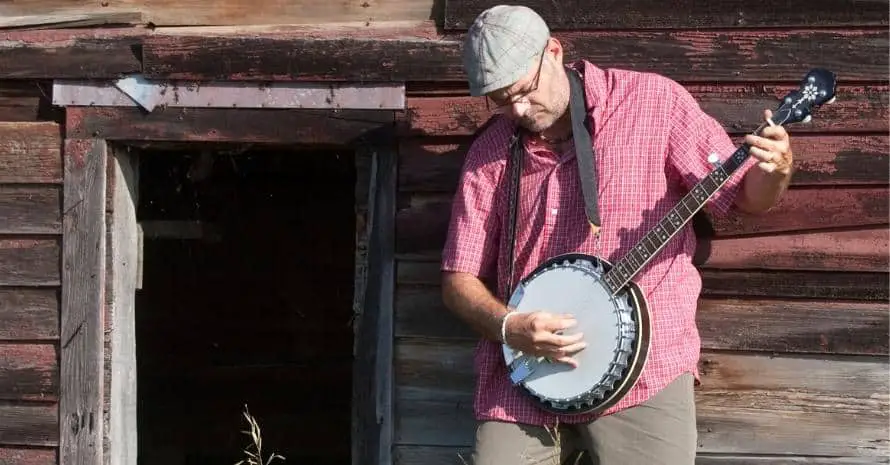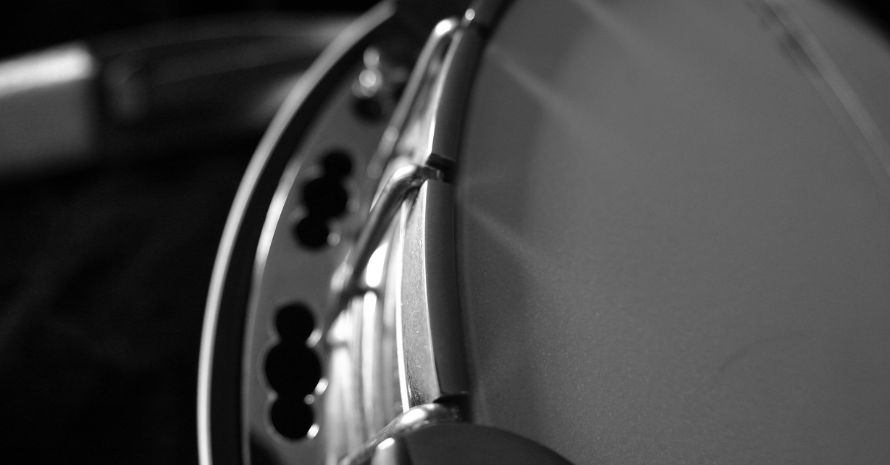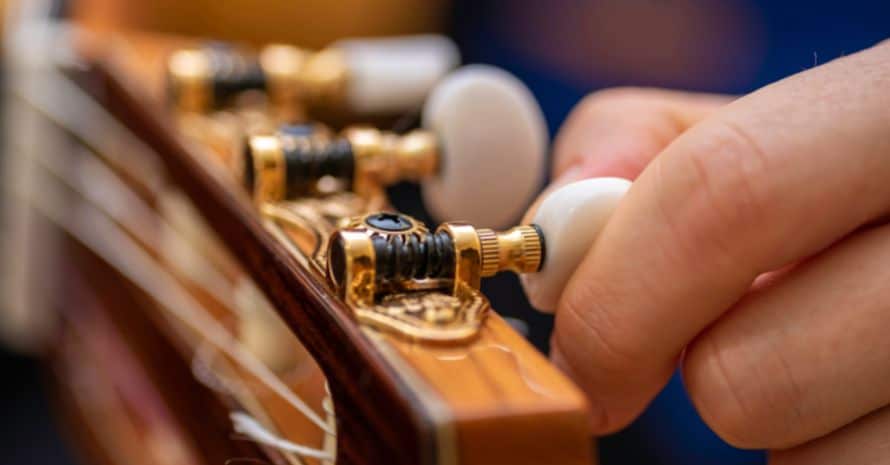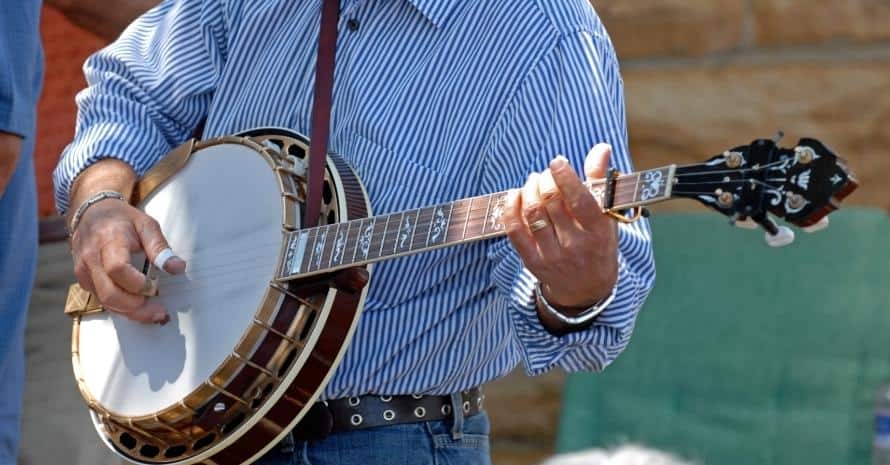After you have made up your mind on what banjo to buy, and you see it freshly unpacked, shining, and seductive, the second question arises. The question is how to tune a banjo? It will pop up again as you master it, though later you may want to retune it for a different sound. There are lots of options, but here we start with the basics for various types. What tools will you need? What notes do you want? How to treat the short string? Let’s address all of them one by one.
Guide
Not only are there more than one type of banjo; there are multiple tuning options. Given this, banjo tuning is a bit different. When tuning a guitar you can tune each string independently, with banjo tuning is often relative, when you tune one string and then tune others in relation to it. Again, there are variations for different tuning. That’s alright: a banjo is a very alive instrument, and being alive means changing.
What You Need for Tuning
What you basically need for tuning a banjo doesn’t differ much from what you’ll need for a set of a guitar or other similar instrument. To tune a banjo with a tuner, you need a banjo and a tuner. Plus, maybe an extra tool named string winder. It’s not a must, but it can accelerate tuning as it helps you rotate tuning pegs twice as fast.
Banjos sometimes come bundled, with a tuner and other accessories like gig bags, straps, and, of course, fingerpicks. If you have bought such a bundle, it can also contain a more detailed manual that refers to just the items you already have, which makes tuning easier. It probably has a lot more than I put here – simply because I cover various banjo types, and the manual sticks to a particular one.
If you wish, you can also refer to an already well-tuned banjo or another instrument… if you can access it. If the one you have just unpacked is your first instrument, hope it comes with a tuner or at least a QR code.
Tuning a Banjo Without Extra Tools
Few musicians can figure out how to tune a banjo by ear from the beginning, but it comes from experience. There are special techniques which all start with just one trick: for a 5-string banjo tune just one reference string precisely. If you don’t have a reference in your mind or need to hear it actually, you can find it in lots of places – from another instrument (as I’ve said) from records and videos. Then, according to this string already tuned, you tune other strings at certain frets. For example, if you have string 1 tuned to D, then tuning the following gets easier:
- String 5 = String 1, fret 5
- String 2, fret 3 = String 1 (open)
- String 3, fret 4 = String 2 (open)
- String 4, fret 5 = String 3 (open)
Can you see the mathematical beauty of this rule? Do you understand now why Pythagoras saw music as a mathematical domain, and his followers like al-Farabi perfected the math of music?
It’s more related than you may think: it’s West African slaves that brought the banjo to America, and the instrument is considered to be the evolution of akonting, popular in Senegal and nearby countries. West Africa had long connections with Muslim states in North Africa and the Iberian Peninsula, and thus could be inspired by oud, the instrument al-Farabi used for his research. So maybe you wouldn’t be able to play your bluegrass in Kansas, if not for a man who lived eleven centuries ago in what’s now Kazakhstan. Come on, drop a Borat joke now.
Using a Tuner for Banjo
There is no need to list the advantages of a tuner which enables you to tune each string independently. Just find the right note in the tuner and tighten your string until it sounds like it. If you don’t have a hardware tuner, though, then you probably have a smartphone. Tuner apps are now in abundance, so here are some I’d recommend:
- GuitarTuna (iOS, Android). It works fine for 5- and 4-string banjo tuning, too, and has presets for these.
- Ultimate Banjo Tuner (Android). I’d recommend buying a premium version, because ads are implemented in the most annoying way in the free one.
- Banjo Tuner – LikeTones (iOS). Again, the premium version is capable of more, including more tuning presets, 1 Hz-step calibration, frequency and frequency deviation detection, etc.
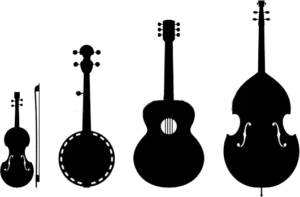
Banjo Tuning Types
Let’s address the most common banjo tunings. As there are many of them, I will only briefly describe each; it’s not hard to learn more about them. The following applies to all the tunings I describe:
- The strings are listed from the 5th (that is, the one closest to the sky, to avoid confusing you by saying “the highest”) and up to the 1st (often referred to as “closest to the ground”). This reversed banjo string order may confuse you first. I have felt it too, that’s okay.
- When two strings are tuned to the same note of different octaves, I’ll specify which one is an octave lower or higher.
- But I won’t specify if I only describe the difference between this tuning and another one, so make use of the reference.
1. 5-String Banjo
If you chose a traditional 5-string banjo, tune it after you choose the way you want it to sound. Yes, it allows for various options due to its flexible settings. As you know, by default it has four long fretted strings and one short fretless one that is the closest to the sky as you hold it. This array allows for various settings, which I’ll describe here.
- Open G (G, D, G, B, D). It’s the banjo standard G tuning, also referred to as “G standard”. The name is taken from the G chord you receive if you strum it without fingering strings. The fifth G is an octave higher than the third (like it is supposed to be with the short string), and the fourth D is an octave lower than the second one.
- G Modal (G, D, G, C, D). It only differs in the 2nd string tuning and is great for old songs, and though now its popularity has waned, for retro repertoire (couldn’t resist this assonance) it’s still valid.
- Double C (G, C, G, C, D). Again, it’s for those into really old songs. Tune your banjo to the Open G, then retune the string 4 down to C and the string 4 from D up to C. In addition, it’s easily transformable into Double D – just put a capo on the second fret.
- C Tuning (G, C, G, B, D). It’s also known as Drop C, because its only difference from the Open G is that the fourth string is dropped to C.
- D Tuning (F#, D, F#, A, D). This one is not that frequent and used for certain songs (though you may compose your own with a D-tuning banjo, of course). The string octave ratio is similar to that of the Open G tuning.
- E Tuning (E, B, E, G#, B). This type of tuning is popularized by Pete Seeger and is usually practiced for longneck banjos (to which we will return). The short string E is (as you might have guessed) an octave higher than the third one, and the fourth string B is an octave lower than the first one.
These are the traditional variants of standard banjo tuning (to some extent), but if you see the logic, you can even think of inventing your own after doing the math. Science, bee! But I’d recommend mastering an existing tuning (or rather two) and only then set off for inventions.
2. 4-String 19-Fret or 17-Fret Tenor Banjo
When it comes to 4-string tenor banjos, there are less options, because it does not feature a short fifth string, and, in absence of the drone one, it has all its strings tuned to different notes, with none of them repeating itself an octave higher or lower. Still, you have enough various ways to tune a tenor banjo. Here are the most common ones.
- Standard Tenor Tuning (C, G, D, A)
- Irish Tenor Tuning (G, D, A, E)
- Chicago Tuning (D, G, B, E)
- Adapted Jazz Tuning (D, A, E, B)
In all these tunings, again, we count the strings up, from the closest to the ground to the closest to the sky.
3. 4-String Plectrum Banjo
It’s a very specific version of banjo mostly used in jazz and ragtime. This version doesn’t have the short string either, and in terms of tuning it’s closer to the tenor banjo.
- Standard Plectrum Tuning (C, G, B, D). Similar to the C tuning for the standard 5-string banjo, if we dismiss the short string of the latter.
- Chicago Tuning (D, G, B, E). As you see, it’s identical to the namesake tuning style for tenor banjo.
This instrument may lack the characteristic “droning” sound of the classical banjo, but it retains its shape and, what’s just as important, its cheering abilities.
4. 5-String Longneck Banjo
It’s also popularized by Pete Seeger who is regarded as the inventor of the long neck type. Unlike the shorter 17- or 19-fret tenor one, or even the 22-fret standard 5-string banjo, this one has 25 frets, which makes it an even more versatile instrument. Its tuning is simplified with its long neck because it provides more options for using capos on it. To tune a long neck banjo, you can choose one of these options:
- Open E (E, B, E, G#, B). This is also an option for the standard banjo tuning if you want to apply it to the long-neck version.
- Open G (G, D, G, B, D). Instead of retuning each string, you just put the capo on the 3rd fret and the capo spike for the 5th string on the 11th fret. Effectively, you shorten the long-neck banjo strings to those of the regular one.
- Key of A. Put the capo on the 5th fret and the capo spike for the 5th string on the 13th fret.
- Key of B. Put the capo on the 7th fret and the capo spike for the 5th string on the 15th fret.
Now you see why a long-neck banjo is such a versatile instrument: you can shorten it with capos and use it instead of other banjo types. It doesn’t apply to carrying it, alas.
5. 6-String Banjo
This instrument is also known as banjitar (a portmanteau of banjo and guitar), and it’s the great option for those already familiar with guitar art. There are much fewer ways to tune a 6-string banjo, and here they are.
- Standard guitar tuning (E, A, D, G, B, E). This is the most logical one.
- 5-string tuning. For this, you will need a spike capo to make the 5th string shorter. Then tune it like a regular 5-string banjo (to make it a high G and use it as a drone string) and replace the 6th string with another 1st. This is only recommended, though, for those familiar with the 5-string version.
- D, G, D, G, B, D tuning. This makes the instrument more banjo-like.
In Australia, by the way, it’s known as ganjo. Some call it ganjo, like Peter Tosh put it; I don’t champion legalizing it only because it’s never been illegal.
6. 12-String Banjo
You can tune it like the default 6-string banjo, but each of the three strings closest to the sky should have a double tuned in unison, and the three ones closest to the ground should each have a double tuned an octave higher. The result may look like E, E, A, A, D, D, G, G, B, B, E, E (given that the first three are shifted by one octave).
Sounds a bit sophisticated, doesn’t it? Well, nobody says this instrument is easy. But its richness pays for it. Again, this modification is for those who have already mastered more traditional banjo types or a guitar well.
7. Banjo Ukulele
Also known as banjolele, this instrument inevitably raises a question: should you tune a banjo ukulele like the former or the latter? The most popular options are the following:
- G, C, E, A
- g, C, E, A (reentrant tuning)
- A, D, F#, B
Again, it’s the perfect instrument to enter the world of banjos if you already know how to play the ukulele. If not, you better choose a classical 5-string banjo and after mastering it you can experiment with its exotic variations like banjolele or banjitar.

FAQ
Banjo is such a rich and flexible instrument that it will frequently prompt you to answer some questions and find out more. Here is something on the most frequent ones.
How do you check banjo intonation?
Banjo intonation depends on the position of the bridge. To check whether it’s right, position the bridge and install the strings. Then check the same string in open mode and at the 12th fret. To make a note fuller, in case it sounds flat, move the bridge a bit towards the neck (it usually takes millimeters). Repeat for all the strings.
How is scale length measured on a banjo?
It’s usually the length of any of the four strings from the nut to the bridge. As the tension differs, you cannot just measure the string off the instrument. The scale length defines the distance between frets and thus impacts the ease of playing. Usually, you can learn the scale length as you buy the banjo.

Stay Tuned: The Conclusion
As you see, banjo, with its unusual for string instruments approach, allows for many ways of tuning. Though I’d recommend starting with the most mainstream banjo Open C tuning, you have all it takes to try different methods and expand your horizons and preferences. Maybe it will grow into a banjo collection on your wall and a repertoire that leaves none of them unused.
If you already have some experience, how do you tune your banjo? Do you find it easy to retune it for different melodies and songs? What tools do you use? Share your experience (or ask questions if you wish) in the comments!
Also read:

